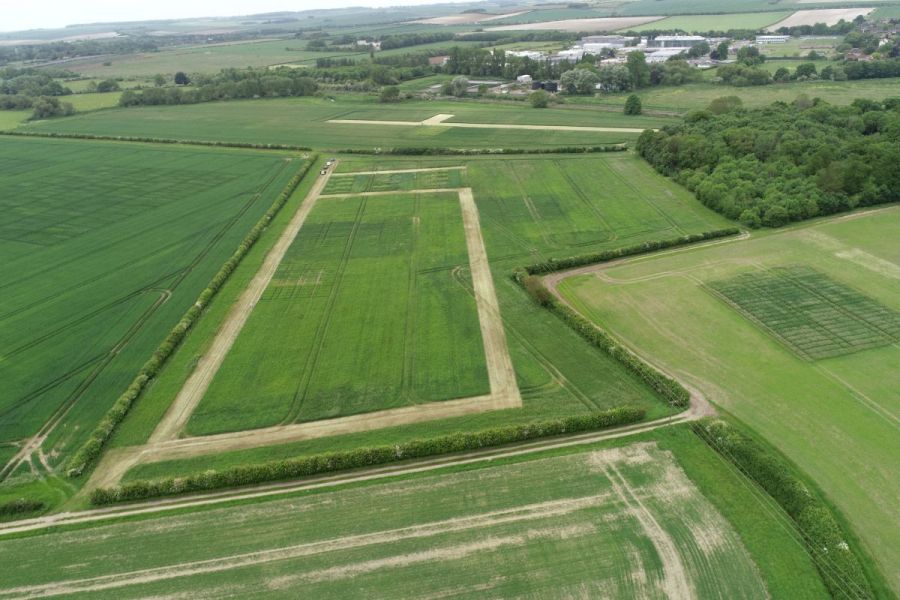As growers grapple for more sustainable weed control strategies, a long-term trial programme is focusing on optimising application timings for the weed – not the crop. CPM finds out more.
“We’ll be able to start to have a conversation about how we can make truly informed, accurate decisions about the future of sustainable weed control.”
By Charlotte Cunningham
In a quest to find solutions for sustainable weed control, a long-term research programme is aiming to shed a light on how growers can better approach both chemical and cultural strategies in order to keep yield-robbing weeds at bay.
The Diverse Weed Programme was launched by NIAB in 2019 and is based at 2ha site in Hinxton. It was set up as a dedicated platform to study long-term sustainable management of diverse broadleaf weed species through a series of trials, explains weed biology and management specialist John Cussans, who is heading up the research. “The whole point of it has been to shift the focus onto a more diverse range of weeds – particularly broadleaf weed management.
“As an industry, we tend to think of all weed management through the lens of controlling blackgrass and other key grassweeds. However, as we change the way we farm and make rotations more diverse, in turn that’s also going to create a more varied weed situation to manage.”
The site has been part of a broad arable rotation for a number of years, resulting in an incredibly rich seedbank – with about 32 species of weeds noted to date – presenting a unique opportunity to really push the boundaries of weed control, says John.
“Through the various trials and research we’re carrying out, we really have a chance to up our game in terms of technical understanding, biology of weeds, how they interact with different cultivation systems, rotations and crucially, we have to relearn some basic information about weed control – timings, weed size and conditions at application. This is something that I think has been slightly taken for granted over recent years,” he adds.
To enable this back-to-basics approach, NIAB has partnered with Nufarm to carry out long-term trials which focus specifically on optimising timing applications for the weed, rather than the standard approach of spraying at certain crop development stages, explains the firm’s Laurence Power. “The ethos behind the work is to show both farmers and agronomists just how important it is to apply the right product at the right time for the weed – not the crop,” he explains.
“As an industry, we’ve become fixated on key crop timings for weed control – T1, T2 etc. However, this might not be the most effective window, so we’re working with NIAB to find out exactly when that optimum timing is.
“Something we keep hearing a lot at the moment is that resistance is building in sulfonylureas – and there is – but actually, more often than not what’s making this worse is poor application. As a result, we get poor weed control.”
Delving deeper into how the trial is set up, a variety of Nufarm chemistry will be used across multiple winter wheat plots but applied at different timings to observe the impact on weed control.
In terms of the programme components, the trial will include the following combinations:
- 5 l/ha Isomec Ultra (dichlorprop-P+ MCPA+ mecoprop-P)
- 25g/ha Paramount Max (florasulam+ tribenuron-methyl)
- 42g/ha Ally Max SX (metsulfuron-methyl+ tribenuron-methyl)
- 25g/ha Paramount Max + 1.5 l/ha Isomec Ultra
- 25g/ha Paramount Max + 2 l/ha Isomec Ultra
- 5 l/ha Isomec Ultra + 20g/ha Paramount Max
- 5 l/ha Isomec Ultra + 25g/ha Paramount Max
The plan is to apply the treatments in ‘waves’ to each plot, with 80 days between the first and last treatment, explains Laurence.
As the trials are aimed at applying at the right time for the weed – not the crop – Laurence says visual assessments will be carried out pre-treatment, at treatment and post-treatment. “During these assessments we’ll obviously be looking at control levels, but we’re also going to be observing green biomass. The reason for this is that sometimes with sulfonylureas we see stunting, rather than killing of weeds, meaning it will remain there all season just as a smaller plant.”
Looking at the progress to date, as Nufarm only took over the site in May last year, the trials are very much in their infancy.
However, the crop plots were drilled in the autumn, the protocols have been set and the first ‘wave’ of applications were applied on 6 March, explains Laurence. “This was a little later than planned due to the difficult weather conditions. But the good thing about that is it’s reflective of what many growers have faced this year and so our results will be in line.”
What’s more, to strengthen this Laurence explains that the trials will be carried out over a number of years. “This is a five-year partnership, so we hope to be able to highlight the long-term opportunities associated with adapting weed control strategies.”
To enable a good benchmark for comparison, the first year of trials will be focused on a standard approach. “We’re using a standard, flat-fan nozzle and working at water volumes of 200 l/ha. Next year, the plan is to carry out the same trials again but with a different nozzle and working at reduced water rates.
“The beauty of the five-year trial is that we can add new elements in year-on-year, but having a good reference point for comparison is vital,” he points out.
At the end of this time period, Laurence says the hope is that they’ll have been able to build a set of data which will allow agronomists and farmers to make the best decisions when it comes to weed control.
John concludes: “The trial with Nufarm is just one important piece of the weed control puzzle. But once we understand more about the fundamentals of control, we can start to bring in other elements – like cultural methods and utilising new technologies. Eventually, we’ll be able to start to have a conversation about how we can make truly informed, accurate decisions about the future of sustainable weed control in a changing production system.”
This article was taken from the latest issue of CPM. Read the article in full here.
For more articles like this, subscribe here.
Sign up for Crop Production Magazine’s FREE e-newsletter here.




